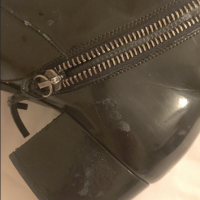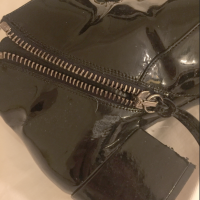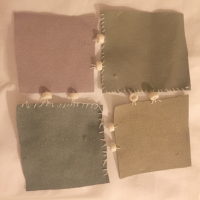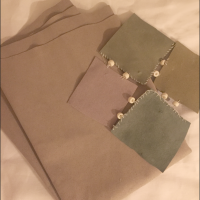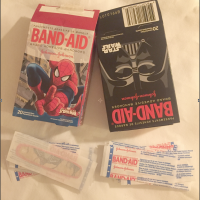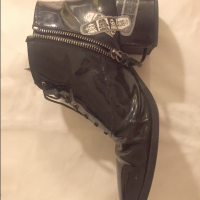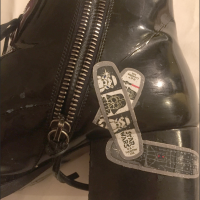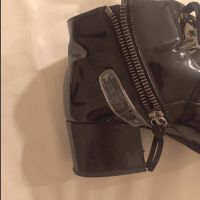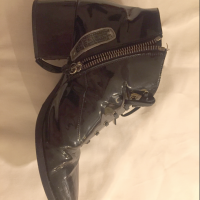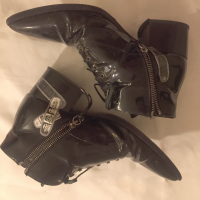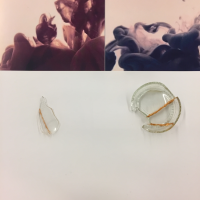1) It was a long journey from choosing the fabric I want to text in swatches to switching plan by another inspiration. My first plan is covering the scratch by another leather. And I did a small watches by the suede leather I planned to use and it looks great. However, just before I was trying to do the “real” version on my shoes, two things stopped me. First, the machine didn’t work somehow. But I need that kind of specific leather machine to finish the work. And second, I find the coat of the leather on my shoes may be damaged during the sewing because the shoes’ leather is patent leather. Therefore, I decided to switch my plan a little bit. Highly inspired by Kintsugi’s repair technique, I thought I could explore the scratch’s beauty side and highlight that, instead of hiding them. When we get a small scratch, we use bandages after clean the wound. That’s why I want to patch the bondages to my shoes. It can be both decorative and practical. Even it’s a simple repair method.
But it works perfectly. This simple movement save one pair of my favorite boots, which lead me to question that is there lots of “small” movements can actually avoid the objects being thrown?






The fix that I want to do but not skillful enough is actually continuing this project. Because I haven’t tried the method with leather and had an experience with the leather machine.
2)According to the Long Life Design Criteria, Kintsugi definitely matches almost all the standards. He uses Urushi technique to transfer the damages into more valuable and beautiful products. And he is quite passionate and patient about his work. Beyond that, he mentioned a theory which there must be a real crack under to ensure the gold powder and foil can stay a long time on the surface. This “Zen” theory makes all the process and products more interesting than the original ones and leads the repair technique to have its own art form.
I once saw this kind of repair technique with jade and gold. However, after knowing exactly the process, I was even more intrigued by it and introduced Urushi to my own accessory collection for the accessory class. The picture below shows the version I did, which used the glass and foil glue to explore the Urushi process. I like both the resort and long process of repair itself. It includes aesthetics and the philosophy of turning the imprecation into the unique and sparkle spots.
3)
https://www.environmentalleader.com/2014/10/assessing-the-environmental-impact-of-the-fashion-world/
It analyses how fashion industry impacts on the water system in garment industry with lots of accurate data. And it shows we have 17 to 20 percent of industrial water pollution coming from textile dyeing and treatment. It also points out that we need to take action from the roots, the manufacturers, shareholders to have a solution to reducing water pollution. And also we need gave more social educating about environment and fashion to the consumers and designers.
https://www.trustedclothes.com/blog/2017/03/24/water-conservation-garment-industry/
This article gives an overview of the water system in the garment industry. Manufacturers in Bangladesh as a specific theme is taking methods to a cleaner and greener process. And through the organization PACT, they have reduced almost half of the water consumption.
4) The coastal promenade zone made by sand and rock can be considered as the resilience design. It can provide both wildlife habitat and residential leisure place. Furthermore, It can adjust the urban climate by reducing the urban heat island effect. It can be used as the green infrastructure of flood prevention, as well as the public community area. After the research, I think the resilience design is not only about the biological environment, but also in the social and community aspect. Cultural diverse communities are one of the issues we are facing, especially living in a multi-cultural city. Social aspects of resilience can be as essential as physical responses. The All-Gender restrooms in the school can be considered as the cultural social resilience design at this point. I think any design considered the surroundings and people have the potentiality to be a resilience design.
